- Home
- Farley Mowat
The Snow Walker
The Snow Walker Read online
Praise for the snow walker
“Farley Mowat re-establishes himself as that figure honored in both primitive and advanced communities, the master storyteller. His tales are compelling, though the unifying thread running through them traces a grisly line… Mowat is superb at creating mood, personalities and relationships.”
San Francisco Examiner-Chronicle
“Excellent… These are stories that have a deep emotional content; they are spiritually moving in the way that good fiction should be…”
Books in Canada
“Powerful and unusual. The Snow Walker is a book about a harsh environment and about human beings extended into that rare realm of heroism. The tales are told in a style that is both entertaining and illuminating.”
Boston Herald Advertiser
“Farley Mowat has often been described as one of Canada’s greatest storytellers and The Snow Walker is splendid evidence of why he deserves that title… It is engrossing reading.”
Vancouver Sun
“Passionate, harsh, with a mythic density… tales so simple and strong you read them again to make sure you haven’t been tricked into feeling a story in your stomach for a change.”
New York Times
Where there is merit in this book it is in no small part due to the unremitting, gentle but implacable persistence of Lily Miller. Where the work falters it is because sometimes I neglected to listen to her.
...................
Copyright © 2014 by Farley Mowat Ltd.
All rights reserved. No part of this publication may be reproduced, stored in a retrieval system or transmitted, in any form or by any means, without prior permission of the publisher or, in the case of photocopying or other reprographic copying, a licence from Access Copyright, www.accesscopyright.ca, 1-800-893-5777, [email protected].
Douglas & McIntyre (2013) Ltd.
P.O. Box 219 Madeira Park, BC, CANADA V0N 2H0
www.douglas-mcintyre.com
Cataloguing data available from Library and Archives Canada
978-1-77100-085-7 (paper)
978-1-77100-086-4 (ebook)
Cover illustration by Brian Tong
Typesetting by Cyanotype
We gratefully acknowledge financial support from the Government of Canada through the Canada Book Fund and the Canada Council for the Arts, and from the Province of British Columbia through the BC Arts Council and the Book Publishing Tax Credit.
Snow
_______
When Man was still very young he had already become aware that certain elemental forces dominated the world womb. Embedded on the shores of their warm sea, the Greeks defined these as Fire and Earth and Air and Water. But at first the Greek sphere was small and circumscribed and the Greeks did not recognize the fifth elemental.
About 330 B.C., a peripatetic Greek mathematician named Pytheas made a fantastic voyage northward to Iceland and on into the Greenland Sea. Here he encountered the fifth elemental in all of its white and frigid majesty, and when he returned to the warm blue Mediterranean, he described what he had seen as best he could. His fellow countrymen concluded he must be a liar since even their vivid imaginations could not conceive of the splendour and power inherent in the white substance that sometimes lightly cloaked the mountain homes of their high-dwelling Gods.
Their failure to recognize the immense power of snow was not entirely their fault. We who are the Greeks’ inheritors have much the same trouble comprehending its essential magnitude.
How do we envisage snow?
It is the fragility of Christmas dreams sintering through azure darkness to the accompaniment of the sound of sleigh bells.
It is the bleak reality of a stalled car and spinning wheels impinging on the neat time schedule of our self-importance.
It is the invitation that glows ephemeral on a woman’s lashes on a winter night.
It is the resignation of suburban housewives as they skin wet snowsuits from runny-nosed progeny.
It is the sweet gloss of memory in the failing eyes of the old as they recall the white days of childhood.
It is the banality of a TV advertisement pimping Coca Cola on a snowbank at Sun Valley.
It is the gentility of utter silence in the muffled heart of a snow-clad forest.
It is the brittle wind-rush of skis; and the bellicose chatter of snowmobiles.
Snow is these things to us, together with many related images; yet all deal only with obvious aspects of a multifaceted, kaleidoscopic and protean element.
Snow, which on our planet is a phoenix continually born again from its own dissolution, is also a galactic and immortal presence. In the nullity of outer space, clouds of snow crystals, immeasurably vast, drift with time, unchanged since long before our world was born, unchangeable when it will be gone. For all that the best brains of science and the sharpest of the cyclopean eyes of astronomers can tell, the glittering crystals flecking the illimitable void are as one with those that settle on our hands and faces out of the still skies of a December night.
Snow is a single flake caught for an instant on a windowpane. But it is also a signboard in the solar system. When astronomers peer up at Mars they see the Red Planet as a monochromatic globe—except for its polar caps from which gleaming mantles spread toward the equatorial regions. As the antelope flashes its white rump on the dun prairies, so does Mars signal to worlds beyond it with the brilliance of our common sun reflected from its plains of snow.
And so does Earth.
When the first star voyager arcs into deep space, he will watch the greens and blues of our seas and lands dissolve and fade as the globe diminishes until the last thing to beacon the disappearing Earth will be the glare of our own polar heliographs. Snow will be the last of the elementals in his distant eye. Snow may provide the first shining glimpse of our world to inbound aliens… if they have eyes with which to see.
Snow is crystalline dust, tenuous amongst the stars; but on Earth it is, in yet another guise, the Master Titan. To the south it holds the entire continent of Antarctica in absolute thrall. To the north it crouches heavily upon mountain ranges; and the island subcontinent of Greenland literally sags and sinks beneath its weight. For glaciers are but another guise of snow.
Glaciers are born while the snow falls; fragile, soft and almost disembodied… but falling steadily without a thawing time. Years pass, decades, centuries, and the snow falls. Now there is weight where there was none. At the surface of an undulating white waste, there seems to be no alteration, but in the frigid depths the crystals are deformed; they change in structure, interlock with increasing intimacy and eventually meld into black, lightless ice.
Four times during Earth’s most recent geological age snow fell like this across much of the northern half of our continent and in Europe and Asia too. Each time, snow altered the face of almost half a world. A creeping glacial nemesis as much as two miles thick oozed outward from vast central domes, excoriating the planet’s face, stripping it of life and soil, ripping deep wounds into the primordial rock and literally depressing Earth’s stone mantle hundreds of feet below its former level. The snow fell, softly, steadily, until countless millions of tons of water had vanished from the seas, locked up within the glaciers; and the seas themselves withdrew from the edges of the continents.
There is no natural phenomenon known to us that can surpass the dispassionate power of a great glacier. The rupturing of Earth during its most appalling earthquake cannot compare with it. The raging water of the seas in their most violent moments cannot begin to match it. Air, howling in the dementia of hurricanes, is nothing beside it. The inner fire that blows a mountain
to pieces and inundates the surrounding plains with floods of flaming lava is weak by comparison.
A glacier is the macrocosmic form of snow. But in its microscopic forms, snow epitomizes ethereal beauty. It is a cliché to say that no two snowflakes are identical, but it is a fact that each single snowflake that has fallen throughout all of time, and that will fall through what remains of time, has been—will be—a unique creation in symmetry and form.
I know of one man who has devoted most of his adult life to the study of this transient miracle. He has built a special house fitted with a freezing system, instead of heating equipment. It is a house with a gaping hole in its roof. On snowy days and nights he sits in icy solitude catching the falling flakes on plates of pre-chilled glass and hurriedly photographing them through an enlarging lens. For him the fifth elemental in its infinite diversity and singularity is beauty incarnate, and a thing to worship.
Few of us would be of a mind to share his almost medieval passion. In truth, modern man has insensibly begun to develop a schizophrenic attitude toward the fifth elemental. Although we may remember our childhood experience of it with nostalgia, more and more we have begun to think of snow with enmity. We cannot control snow, nor bend it to our will. The snow that fell harmlessly and beneficently upon the natural world our forefathers lived in has the power to inflict chaos on the mechanical new world we have been building. A heavy snowfall in New York, Montreal, Chicago, produces a paralytic stroke. Beyond the congealed cities it chokes the arteries of our highways, blocks trains, grounds aircraft, fells power and telephone cables. Even a moderate snowfall causes heavy inconvenience—if smashed cars, broken bodies, and customers for the undertakers are only inconveniences.
We will probably come to like snow even less. Stories about the good old-fashioned winters when snow mounted to the eaves of houses and horse-hauled sleighs were galloped over drifts at tree-top level are not just old wives’ tales. A hundred years ago such happenings were commonplace. However, during the past century our climate has experienced a warming trend, an upswing (from our point of view), in the erratic cyclic variations of the weather. It has probably been a short-term swing and the downswing may soon be upon us. And where will we be then, poor things, in our delicately structured artificial world? Will we still admire snow? More likely we will curse the very word.
However, when that time comes there may still be men alive who will be unperturbed by the gentle, implacable downward drift. They are the true people of the snows.
They live only in the northern hemisphere because the realm of snow in the southern hemisphere—Antarctica—will not permit the existence of any human life unless equipped with a panoply of protective devices not far short of what a spaceman needs. The snow people ring the North Pole. They are the Aleuts, Eskimos and Athapascan Indians of North America; the Greenlanders; the Lapps, Nensi, Chulcchee, Yakuts, Yukagirs and related peoples of Eurasia and Siberia.
Cocooned in the machine age, we smugly assume that because these people live unarmoured by our ornate technology, they must lead the most marginal kind of existence, faced with so fierce a battle to survive that they have no chance to realize the “human potential.” Hard as it may strike into our dogmatic belief that technology offers the only valid way of life, I can testify from my own experiences with many of the snow people that this assumption is wrong. They mostly lived good lives, before our greed and our megalomaniac arrogance impelled us to meddle in their affairs. That is, if it be good to live at peace with oneself and ones fellowmen, to be in harmony with one’s environment, to laugh and love without restraint, to know fulfilment in one’s daily life, and to rest from birth to death upon a sure and certain pride.
Snow was these people’s ally. It was their protection and their shelter from abysmal cold. Eskimos built complete houses of snow blocks. When heated only with simple animal-oil lamps, these had comfortable interior temperatures, while outside the wind screamed unheard and the mercury dropped to fifty degrees or more below zero. Compacted snow provides nearly perfect insulation. It can be cut and shaped much more easily than wood. It is light to handle and strong, if properly used. A snowhouse with an inner diameter of twenty feet and a height of ten feet can be built by two men in two hours. On special occasions Eskimos used to build snowhouses fifty feet in diameter and, by linking several such together, formed veritable snow mansions.
All of the snow people use snow for shelter in one way or another. If they are sedentary folk possessing wooden houses, they bank their homes with thick snow walls in wintertime. Some dig a basement in a snowdrift and roof it with reindeer skins. As long as snow is plentiful, the peoples of the far north seldom suffer serious discomfort from the cold.
Snow also makes possible their transportation system. With dog sleds and reindeer sleds, or afoot on snowshoes or trail skis, they can travel almost anywhere. The whole of the snow world becomes a highway. They can travel at speed, too. A dog or reindeer team can move at twenty miles an hour and easily cover a hundred miles a day.
The mobility snow gives them, combined with the way snow modifies the behavior of game animals, ensures that—other things being equal—the snow people need not go hungry. Out on the arctic ice a covering of snow gives the seals a sense of false security. They make breathing holes in the ice, roofed by a thin layer of snow. The Chukchee or Eskimo hunter finds these places and waits beside them until, at a signal from a tell-tale wand of ivory or wood inserted in the roof, he plunges his spear down into the unseen animal below.
In wooded country, moose, elk and deer are forced by deep snow to “yard” in constricted areas where they can be killed nearly as easily as cattle in a pen. Most important of all, every animal, save those with wings and those who live beneath the snow, leaves tracks upon its surface. From bears to hares they become more vulnerable to the human hunter as soon as the first snow coats the land.
The snow people know snow as they know themselves. In these days our scientists are busy studying the fifth elemental, not so much out of scientific curiosity but because we are anxious to hasten the rape of the north or fear we may have to fight wars in the lands of snow. With vast expenditures of time and money, the scientists have begun to separate the innumerable varieties of snow and to give them names. They could have saved themselves the trouble. Eskimos have more than a hundred compound words to express different varieties and conditions of snow. The Lapps have almost as many. Yukagir reindeer herdsmen on the arctic coast of Siberia can tell the depth of snow cover, its degree of compactness, and the amount of internal ice crystallization it contains simply by glancing at the surface.
The northern people are happy when snow lies heavy on the land. They welcome the first snow in autumn, and often regret its passing in the spring. Snow is their friend. Without it they would have perished or—almost worse from their point of view—they would long since have been driven south to join us in our frenetic rush to wherever it is that we are bound.
Somewhere, on this day, the snow is falling. It may be sifting thinly on the cold sands of a desert, spreading a strange pallidity and flecking the dark, upturned faces of a band of Semitic nomads. For them it is in the nature of a miracle; and it is certainly an omen and they are filled with awe and chilled with apprehension.
It may be whirling fiercely over the naked sweep of frozen plain in the Siberian steppe, or on the Canadian prairies, obliterating summer landmarks, climbing in scimitar drifts to wall up doors and windows of farmhouses. Inside, the people wait in patience. While the blizzard blows, they rest; when it is over, work will begin again. And in the spring the melted snows will water the new growth springing out of the black earth.
It may be settling in great flakes on a calm night over a vast city; spinning cones of distorted vision in the headlights of creeping cars and covering the wounds, softening the suppurating ugliness inflicted on the earth by modern man. Children hope it will continue all night long so that no buses, street c
ars or family automobiles will be able to carry the victims off to school in the morning. But adult men and women wait impatiently, for if it does not stop soon the snow will smother the intricate designs that have been ordained for the next day’s pattern of existence.
Or the snow may be slanting swiftly down across a cluster of tents huddled below a rock ridge on the arctic tundra. Gradually it enfolds a pack of dogs who lie, noses thrust under bushy tails, until the snow covers them completely and they sleep warm. Inside the tents men and women smile. Tomorrow the snow may be deep enough and hard enough so that the tents can be abandoned and the welcome domes of snowhouses can rise again to turn winter into a time of gaiety, of songs, of leisure and lovemaking.
Somewhere the snow is falling.
The Blinding of André Maloche
_______
When I arrived at Caribou there were only two other white men in the settlement: Father Jean-Guy Danioux and his lay brother, André Maloche. The rest of the human population consisted of a dozen Cree families, ten or twelve half-breeds and about ninety Chipewyans; although the Chips could hardly be considered residents since we only saw them three or four times a year when they drifted in to trade or to attend one of the religious festivals.
My posting to Caribou had come about by accident. I’d been spending the last few days of my annual leave from my own post (it was in the western arctic), visiting friends in Winnipeg, when the Caribou post manager had a heart attack and had to be flown out. The Company’s fur-trade commissioner tracked me down and asked me to fill in until he could find a permanent replacement. Because Caribou had the reputation of being about the most isolated and old-fashioned trading post in the Company’s domains, I was curious to see it, so I agreed.
There was no doubt about the isolation. It lay six hundred miles north of Winnipeg, a good way north even of the old trade canoe routes. Freight reached it only once a year by tractor train from The Pas, which was the nearest real settlement. The cat train usually took five weeks to make the round trip over frozen muskegs, across the ice of dozens of rivers and lakes, through the thinning forests of black spruce and jack pine.

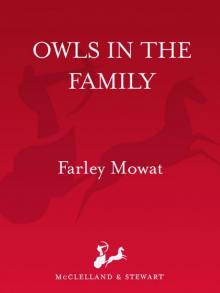 Owls in the Family
Owls in the Family A Whale for the Killing
A Whale for the Killing Sea of Slaughter
Sea of Slaughter The Curse of the Viking Grave
The Curse of the Viking Grave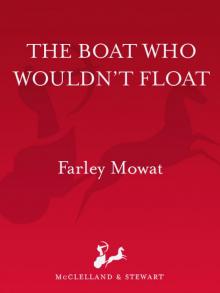 The Boat Who Wouldn't Float
The Boat Who Wouldn't Float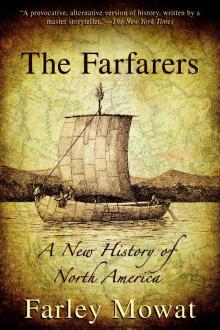 The Farfarers: Before the Norse
The Farfarers: Before the Norse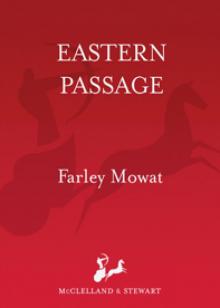 Memoir
Memoir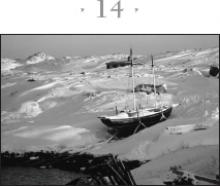 Bay of Spirits: A Love Story
Bay of Spirits: A Love Story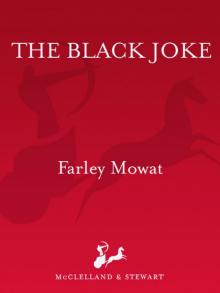 The Black Joke
The Black Joke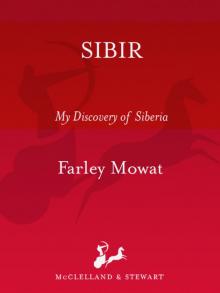 Sibir: My Discovery of Siberia
Sibir: My Discovery of Siberia The Dog Who Wouldn't Be
The Dog Who Wouldn't Be Never Cry Wolf
Never Cry Wolf And No Birds Sang
And No Birds Sang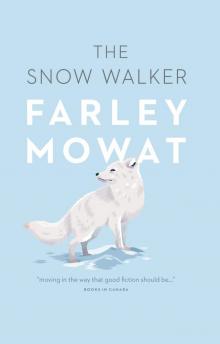 The Snow Walker
The Snow Walker Born Naked: The Early Adventures of the Author of Never Cry Wolf
Born Naked: The Early Adventures of the Author of Never Cry Wolf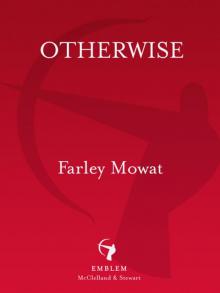 Otherwise
Otherwise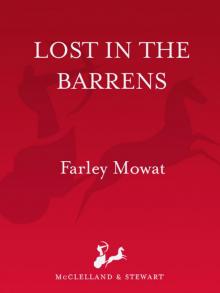 Lost in the Barrens
Lost in the Barrens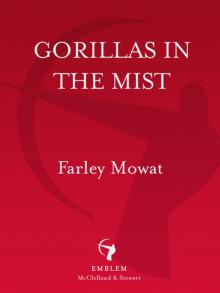 Gorillas in the Mist
Gorillas in the Mist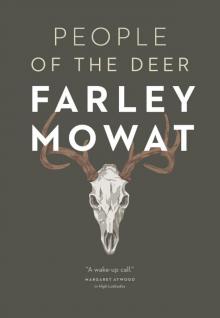 People of the Deer
People of the Deer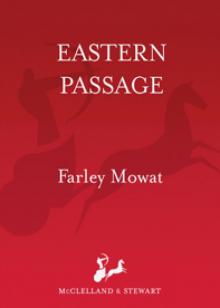 Eastern Passage
Eastern Passage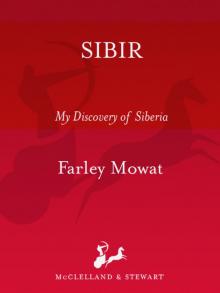 Sibir
Sibir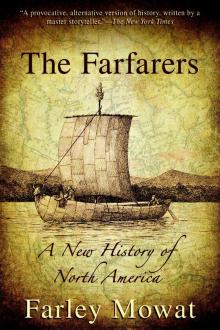 The Farfarers
The Farfarers A Whale For The Killing (v5.0)
A Whale For The Killing (v5.0)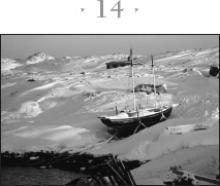 Bay of Spirits
Bay of Spirits And No Birds Sang (v5.0)
And No Birds Sang (v5.0) Born Naked
Born Naked